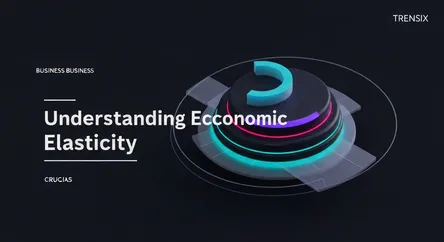Business
Understanding Economic Elasticity

Learn about economic elasticity, which measures how sensitive demand or supply is to changes in price. A key concept for business and policy.
What is it?
Elasticity is a core economic concept measuring the responsiveness of one variable to a change in another. The most common type is price elasticity of demand, which shows how much the quantity demanded of a good changes when its price does. If a small price change leads to a large change in demand, the good is considered "elastic" (e.g., luxury items, brand-name foods). Conversely, if demand barely changes despite a significant price shift, the good is "inelastic" (e.g., gasoline, essential medicine, electricity).
Why is it trending?
In a volatile global economy marked by inflation and supply chain issues, understanding elasticity is critical for business strategy and government policy. Companies use elasticity to set optimal prices, predicting whether consumers will absorb a price hike or switch to a competitor. Governments analyze elasticity to forecast the impact of taxes. For example, a tax on an inelastic product like tobacco is likely to raise significant revenue because consumption won't fall dramatically, making it a key tool in fiscal planning.
How does it affect people?
Elasticity directly impacts household budgets and consumer choices. For inelastic goods, price increases can significantly strain personal finances, as people cannot easily go without them. This is often seen with fuel and utility bills. For elastic goods, consumers hold more power. If one streaming service raises its price, customers can easily switch to another, forcing companies to remain competitive. This principle explains why the prices of some goods are more stable than others, ultimately influencing your purchasing power and overall cost of living.